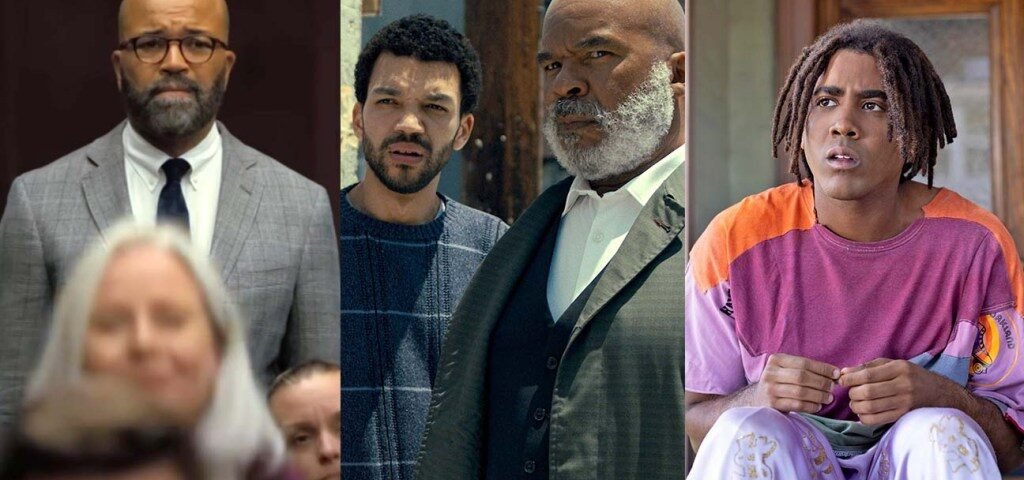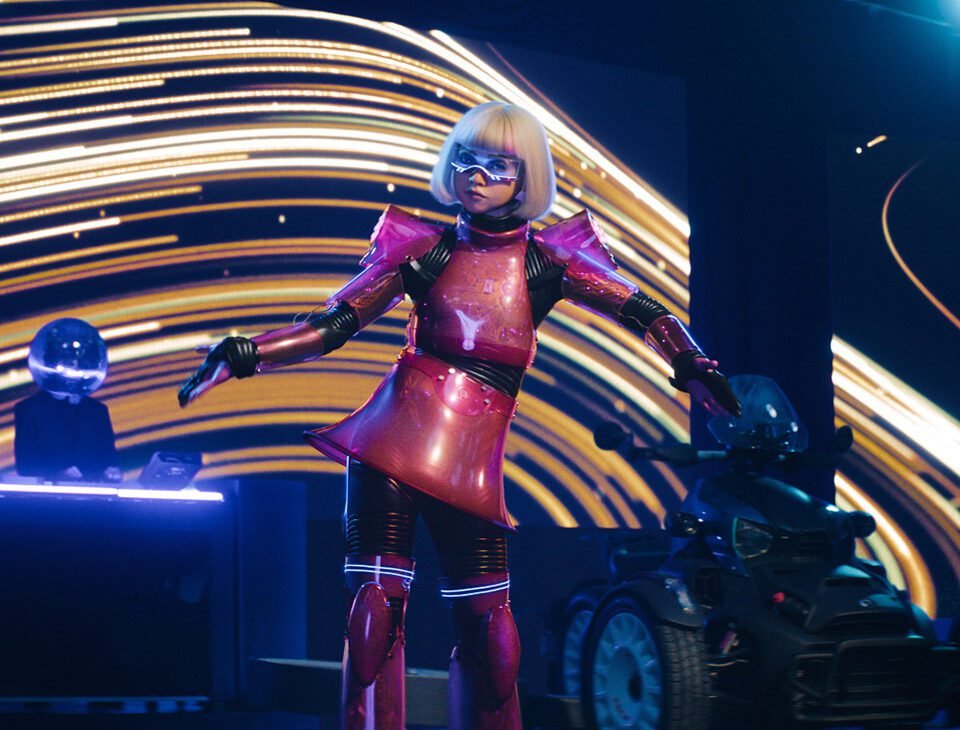


‘Ghostbusters: Frozen Empire’ Review: Paul Rudd and Carrie Coon in a Sometimes Strained, Mostly Breezy Installment of the Paranormal Comedy
March 29, 2024


‘The Beautiful Game’ Review: Bill Nighy Leads a Game Cast in Netflix’s Sweet, Predictable Soccer Dramedy
March 30, 2024The release of ‘The American Society of Magical Negroes,’ the success of ‘American Fiction’ and recent shows like ‘I’m a Virgo’ offer a fresh chance to appraise the state of an evolving subgenre.
Kobi Libii’s debut feature The American Society of Magical Negroes starts on a promising note. Aren, a spindly and awkward artist (an endearing Justice Smith) loiters near a yarn sculpture in a gallery. He seems lost in the sea of roving patrons and bustling waiters. It takes a second for us to realize that Aren created the meditative wool work and is struggling to sell it to the mostly white collectors attending this group show. They find the abstract piece illegible; they repeatedly ask about the material (“Is it … yarn?”) while maintaining a distance. These brief encounters are a clever jab by Libii at a visual art world historically enamored of Black figurative artists.
With this setup, The American Society of Magical Negroes positions itself to skewer “magical negroes” and lampoon liberal sentimentalism about interracial bonds. But instead of delivering on that potential acidity, the film offers mostly benign observations that might have landed more forcefully a decade ago. Aren’s first assignment as an official Magical Negro requires him to manage the emotional life of Jason (Drew Tarver), an entitled white male designer at a tech startup. Libii, who also wrote the screenplay, uses their friendship to explore the toll of Aren’s chronic self-effacement, and weaves in a romance between the reluctant young wizard and his co-worker, Lizzie (An-Li Bogan).
Now that it’s consensus that the Obama presidency didn’t cure America’s race-related ills, what can racial satires tackle? How can they be relevant to the current national moment? Like American Fiction, another well-intentioned project that recently nabbed an Oscar for best adapted screenplay, The American Society of Magical Negroes fails to answer that question, struggling to fulfill the political possibilities of satire. It doesn’t implicate audiences for their complicity or, as John Milton once wrote of the genre, “strike high, and adventure dangerously.”
Long before Get Out brought the racial satire into a more mainstream, Oscar-winning space, there were other films that pointed the way, twisting the subgenre in bold fashion and pushing beyond funny-enough jokes to unleash damning revelations. Spike Lee’s Bamboozled (2000), Ivan Dixon’s adaptation of Sam Greenlee’s 1969 novel The Spook Who Sat by the Door (1973) and Melvin Van Peebles’ absurdist comedy Watermelon Man (1970) delivered tart but clear-eyed observations about race, the effects of capitalism in the cultural sphere and the influence of white supremacy on interpersonal relationships. They targeted everyone, even the directors themselves.
Bamboozled seethes with Lee’s frustrations; its humor is so caustic that “one ultimately ends up laughing at it in the same way one might laugh at a fatal clown car pileup: very quietly — if at all — with a fixed rictus born of guilt and gut-level terror,” writes Ashley Clark in his book Facing Blackness: Media and Minstrelsy in Spike Lee’s Bamboozled. The film chronicles the devastating fate of an African American television writer, Pierre Delacroix (Damon Wayans), who creates a minstrel show to save a failing network. It’s a more acerbic take on Hollywood than Robert Townsend’s Hollywood Shuffle — which is a kind of precursor to American Fiction — and a top-tier example of “adventuring dangerously.”
The Spook Who Sat by the Door is less brash than Bamboozled, but no less brave. Like The American Society of Magical Negroes, the film is concerned with the specter of racist violence. But while Aren joins an organization trying to prevent it, Dan Freeman (Lawrence Cook) infiltrates the CIA to foment conflict. Spook follows Dan as he acts like an Uncle Tom to become the first Black agent in the institution, which has recently come under political pressure to integrate. After Dan resigns from the agency, the film shifts from satire to political thriller. The ex-agent returns to Chicago as a social worker and trains young Black men to become freedom fighters. The sendup of bureaucratic operations at Langley is merely a cover for a galvanizing story of Black power.
That Spook and Bamboozled faced extreme criticism — and in the case of Dixon’s film, near erasure — speaks to the militant veracity of these satires. Van Peebles’ Watermelon Man was a studio affair, but it still managed to shock. In this Kafka-esque story (written by Herman Raucher), a white bigot becomes a Black man overnight. The dramatic change could have been played as a sentimental take on how self-proclaimed liberals can still harbor racist views, but Van Peebles, in casting Godfrey Cambridge to play Jeff Gerber as both a Black man and a white man, uses the story to subvert Hollywood’s comfort with blackface. Choices like that elevate Watermelon Man from “feel-good” satire into edgier territory.
The American Society of Magical Negroes lacks that kind of nerve, losing its satirical teeth the harder Aren falls for Lizzie. The courtship subsumes the narrative, which abandons the kind of sharp humor that might have come from fleshing out the Magical Negro organization and investigating how being biracial impacts Aren’s relationship to whiteness (there’s one throwaway joke that’s never revisited).





